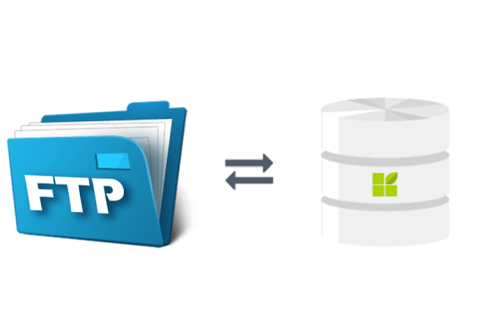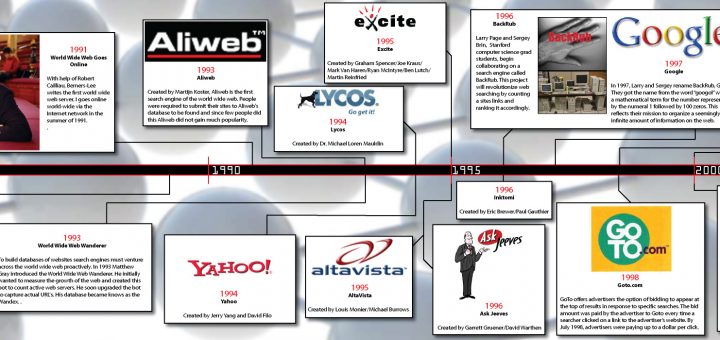
Ports are essential for computers to be able to transmit and retrieve data over the internet. Ports allow files to be transferred and enable the computer to access external hardware, such as printers or other devices. They are also used to identify and understand data being sent from one device into another.
A port can be a physical or virtual connection point. Physical ports are located on the motherboard or socket of the computer. Virtual ports are software-defined. These virtual ports allow computer and router programs to share resources like memory and processors. When a program uses a virtual port, the operating system manages the flow of network traffic. An expansion card can be used to add another port to the motherboard.
Ports do not always offer greater security than other data transfer methods. Instead, ports are a more efficient means of connecting to and communicating between devices. The number of ports on a computer depends on the number of applications running on the machine. There are many types of ports. Each one serves a purpose. Some ports can only be used for specific protocols while others are available for all applications.

Computers use a standardised set of protocols to communicate with each other over the network. This includes Transmission Control Protocol(TCP), User Datagram Protocols, and Hypertext Transport Protocol (HTTP). Each protocol has well-known ports that can transfer data. A web server sends all HTTP messages to port 8. A file transfer application will bind to port 21, in the same manner.
A port number can be used to identify an application running on a computer. An application's port number can be found in the operating system, or it can be assigned automatically by the computer's hardware. It is important to use a port number to identify an application, as not all applications are the same.
A port is usually 16-bit unsigned integer numbers. Every application on a computer is assigned a unique port. A computer may have multiple ports open. An operating system can assign a port automatically to a particular program or choose one for a specific service.
As the Internet expands, so does the need for network port. There are currently 65,535 TCP ports available worldwide. The lowest-numbered ports were historically used to identify most services, while general applications have access to the highest-numbered ports. As address space is decreasing, IPv4 and IPv6 are becoming increasingly scarce.

Computers can function without the use of network ports. However, they do help the computer understand the information being transferred to and from other hardware. This means that the computer can be used in multiple applications without needing to buy additional hardware.
One of the main reasons for using a port is remote access. Remote access can be accomplished by using a Port Forwarding Method. A device is connected to another computer via a remote connection and its IP addresses are made available to other computers on the local area network. Remote Desktop Protocol can also be used to allow remote access to desktop computers.
FAQ
What is Website Design Software?
Graphic artists, photographers, illustrators, and writers use website design software to create websites and other digital media.
There are two types of website design software available: cloud-based and desktop apps. Desktop apps can be installed on your local computer. They also require that you install additional software. Cloud-based software is hosted remotely over the internet. It does not require you to install additional software, which makes them great for mobile users.
Desktop Applications
While desktop applications have more features than cloud-based options, they're not always needed. Some people prefer to work exclusively from a desktop app because they find it more convenient. Others prefer the same tool, no matter if they are using it on a mobile device or a laptop.
Cloud-Based Solutions
A cloud-based solution is a good choice for web designers who are looking to save money and time. These services allow you to edit any type of document from anywhere that has an internet connection. This means you can use your tablet to do some work while you wait for your cup of coffee to brew.
If you decide on a cloud-based solution, you will need to purchase a license. You don't have to buy additional licenses for upgrading to the latest version.
These programs can be used in Photoshop, InDesign, Illustrator or any other Adobe product to create web pages.
What is a responsive website design?
Responsive Web Design is a method of designing responsive websites. It allows content to display on all devices (desktop computers, tablets and smartphones), so that it can be viewed easily on any device. This allows users to simultaneously view a website from one device while still being able to access other features, such as navigation menus and buttons. RWD's goal is to ensure that users view the exact same version of a website on every screen size.
A website that sells primarily through eCommerce would be an example of this. You want your customers to be able to purchase products from your store, even if they are viewing it on a phone.
A responsive site will automatically adjust its layout based on the device being used to view it. The site will display exactly the same way on a laptop as if it were viewed on a desktop computer. But, the page will appear differently if you view it on your phone.
This means that you can create a single website that looks great on every type of device.
What is a UI designer?
A user interface (UI), designer is responsible for designing interfaces to software products. They are responsible for the design of the layout and visual elements in an application. Graphic designers may also be part of the UI designer.
The UI Designer must be able to solve problems and understand how people use computers.
A UI designer should have a passion for technology and software design. From developing ideas to implementing them into code, a UI designer must be able to comprehend all aspects of the field.
They should be capable of creating designs using a variety tools and techniques. They should be able problem solve and think creatively.
They should be detail-oriented, organized and efficient. They must be able quickly and efficiently to create prototypes.
They should be comfortable working with clients, both large and small. They should be able, and willing, to adapt in different environments and situations.
They should be capable of communicating effectively with others. They should be capable of communicating clearly and concisely.
They should be well-rounded and possess strong communication abilities.
They must be motivated and driven.
They should be passionate and dedicated to their craft.
Should I hire a web designer or do it myself?
If you don't want to spend a lot, you shouldn't hire web designers. It may not be a wise decision to pay for web design services if you desire high-quality results.
There are many ways to create websites from scratch, without having to hire expensive designers.
If you're willing and able to invest the time and effort to create a stunning website, you can use free tools such as Dreamweaver or Photoshop to learn how to do it yourself.
You might also consider outsourcing your project to an experienced freelance web developer who charges by the hour instead of per-project.
What types of websites should you make?
This question is dependent on your goals. You may choose to sell products online if you want to build a website. To make this happen, you'll need a reliable eCommerce website.
Blogs are another popular type of website. Each one of these websites requires different skills. For example, to set up a website, you need to understand blogging platforms such WordPress or Blogger.
It is important to choose the right platform for your site. There are many themes and templates that you can use for free.
Once you've chosen a platform, you can build your website by adding content. Your pages can be filled with images, videos and text.
You can publish your website online once you have launched it. Once published, visitors can view your site in their browsers.
How much do web developers make?
You can expect to make between $60-$80 an hour working on your own website. Independent contractors are a better option if your goal is to charge more. An hourly rate of $150-200 could be possible.
Statistics
- Did you know videos can boost organic search traffic to your website by 157%? (wix.com)
- It enables you to sell your music directly on your website and keep 100% of the profits. (wix.com)
- It's estimated that in 2022, over 2.14 billion people will purchase goods and services online. (wix.com)
- Studies show that 77% of satisfied customers will recommend your business or service to a friend after having a positive experience. (wix.com)
- The average website user will read about 20% of the text on any given page, so it's crucial to entice them with an appropriate vibe. (websitebuilderexpert.com)
External Links
How To
What is website hosting?
Website hosting describes where visitors go when they visit a site. There are two types.
-
Shared hosting – This is the most affordable option. Your website files are stored on a server that is owned by another person. When customers visit your site, their requests travel over the Internet to that server. You then receive the request from the owner of the server.
-
Dedicated hosting - This is the most expensive option. Your website is only accessible from one server. Your traffic is private because no other websites have shared space on this server.
Because shared hosting is more affordable than dedicated hosting, most businesses opt for it. Shared hosting allows you to have your website run by the company who owns the server.
Each option has its pros and cons. These are some of the major differences between them.
Pros of Shared Hosting
-
Lower Cost
-
Easy to Set Up
-
Frequent Updates
-
It is available on many Web Hosting Companies
Shared hosting can often cost as little as $10/month. However, this price typically includes bandwidth. Bandwidth is the data transfer speed that you have over the Internet. Even if you are only uploading photos to your blog site, high data transfer rates can still cost you extra.
You will quickly see why you paid so much for your former host once you have started. Many shared hosts offer very little customer support. You'll be on your way after they walk you through setting it up.
You'll want to look into a provider that offers 24-hour phone support. They will help you deal with any issues that arise while your sleeping.
Cons of dedicated hosting
-
More Expensive
-
Less common
-
Requires specific skills
With dedicated hosting, everything you need for your website is at your fingertips. You won't worry about how much bandwidth you are using or how much RAM (random Access Memory) you have.
This means that you'll spend a bit more upfront. But once your online business starts, you'll realize you don't need any technical assistance. You'll be able to manage your servers effectively.
So Which Is Better For My Business?
This depends on the kind of website that you want. Shared hosting is best for those who only need to sell products. It's simple to set it up and keep it updated. It's easy to set up and maintain, as you share a server with other sites. You will likely be updated frequently.
However, dedicated web hosting is the best way to build a community around you brand. You can put your efforts into building your brand, and not worry about how to handle your traffic.
Bluehost.com offers both. They offer unlimited monthly data transfers, 24/7 support, free domain name registration, and a 30-day money-back guarantee.